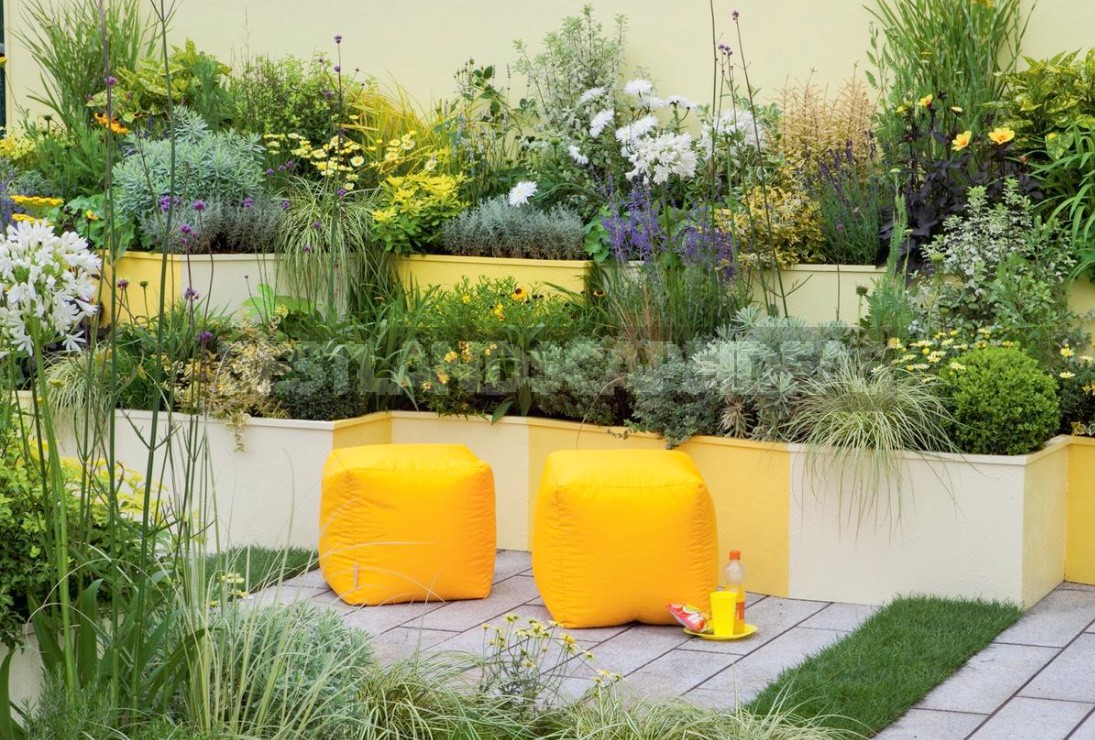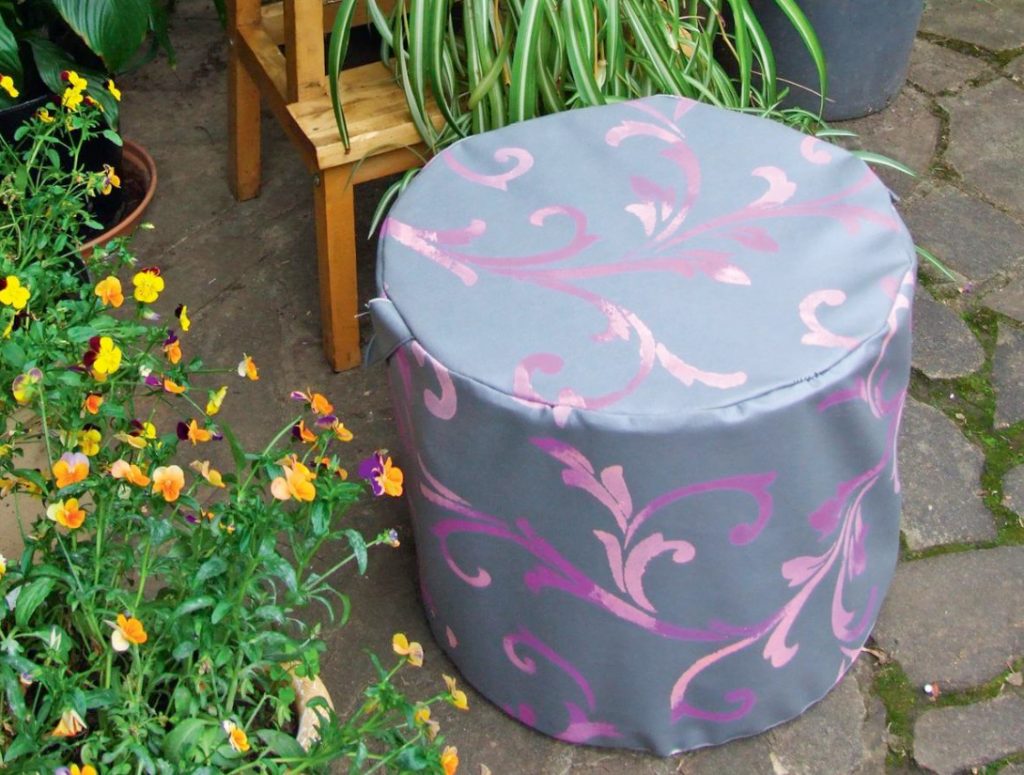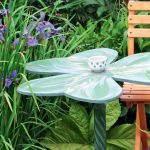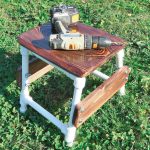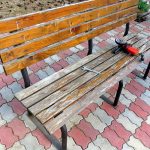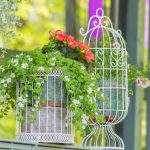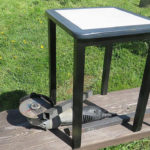In any garden, you will need a light and comfortable garden Ottoman. It does not clutter the space, and creates comfort, but most importantly-it can be easily moved to any corner of the site. And Ottomans are very decorative-well, just like garden figurines! Unfortunately, this piece of furniture is not often sold. But what prevents you from making it yourself? Moreover, the materials for construction in our case do not have to buy. For example, this portable Ottoman with an intricate “Victorian” pattern is made of empty plastic bottles.
Usually these containers are a favorite material for making various decorative figures or garden “sculptures”, but they still guess the “bottle” origin, and they look ordinary homemade. However, this material is very practical in itself. Therefore, plastic bottles are better used for making garden furniture, “hiding” them, for example, in the design of this Ottoman.
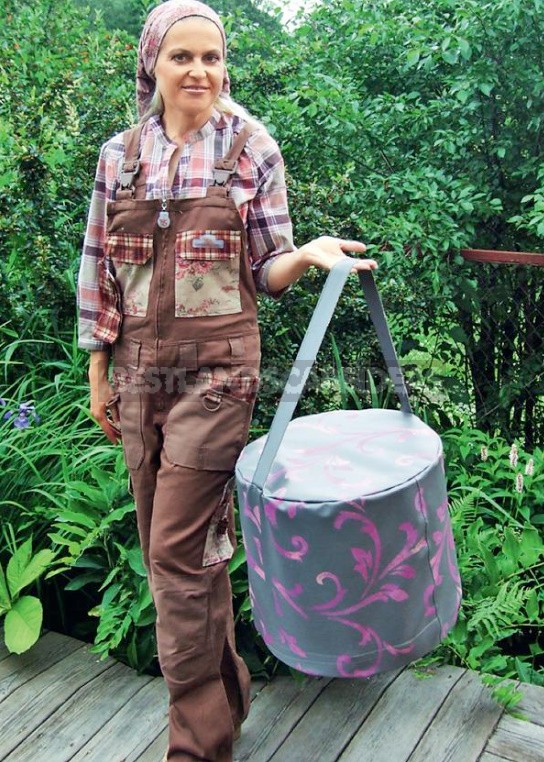
To work, you will need
- Identical high plastic water bottles -25 PCs.
- Duct tape
- The remnants of plywood (any thickness)
- Light-colored dermatin
- Stencil with a pattern
- Aerosol glue for stencils
- Facade paints in pink and purple colors
- Lutrasil (new or old)
- Thick sewing threads in the color of dermatin
- Sponge
- Scissors
- Construction stapler
- Universal glue
- Jigsaw
Procedure for performing the work
1. Take 5-6 bottles and make them tightly in a circle. Put another row of bottles around them, then another, and so on until you have put all the bottles out. You will get a round frame for the Ottoman.
2. Tightly seal the bottle with tape in all directions.
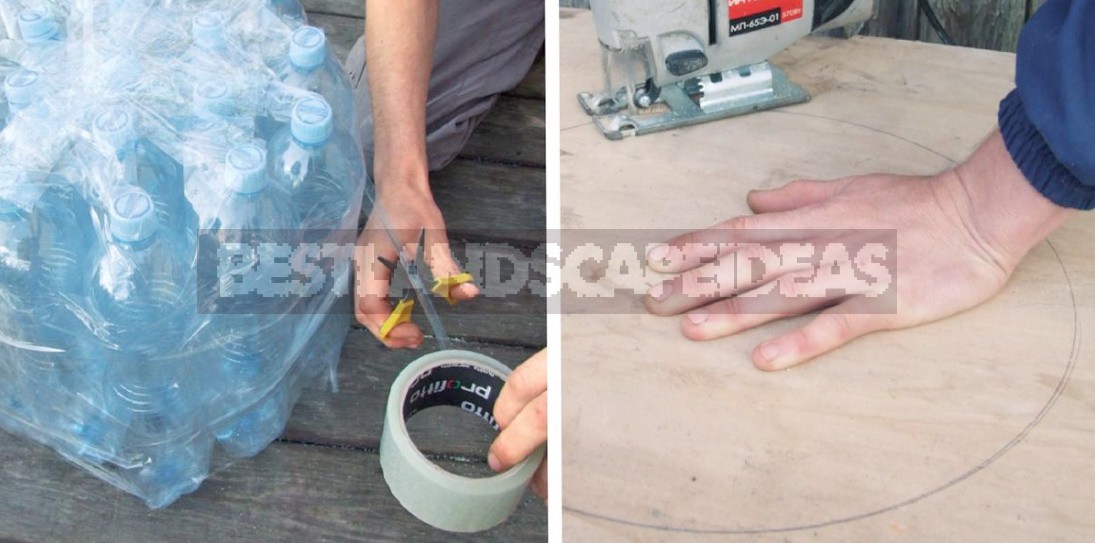
3. Measure the diameter of the resulting frame. From the remains of plywood, use a jigsaw to cut two circles of this diameter (in our case, the diameter of the Ottoman is 40 cm).
4. put one plywood circle on the ground, put a bottle frame on it and cover it with a second plywood circle. Align the circles and tape them tightly to the frame.

5-6. From the dermatin cut out details for the upholstery of the Ottoman: this will be two circles of the appropriate diameter and a wide ribbon, the length of which is equal to the length of the side surface of the Ottoman (measure it with a tape measure), and the width — the height of the Ottoman (equal to the height of the bottles). Don’t forget to leave allowances for seams!
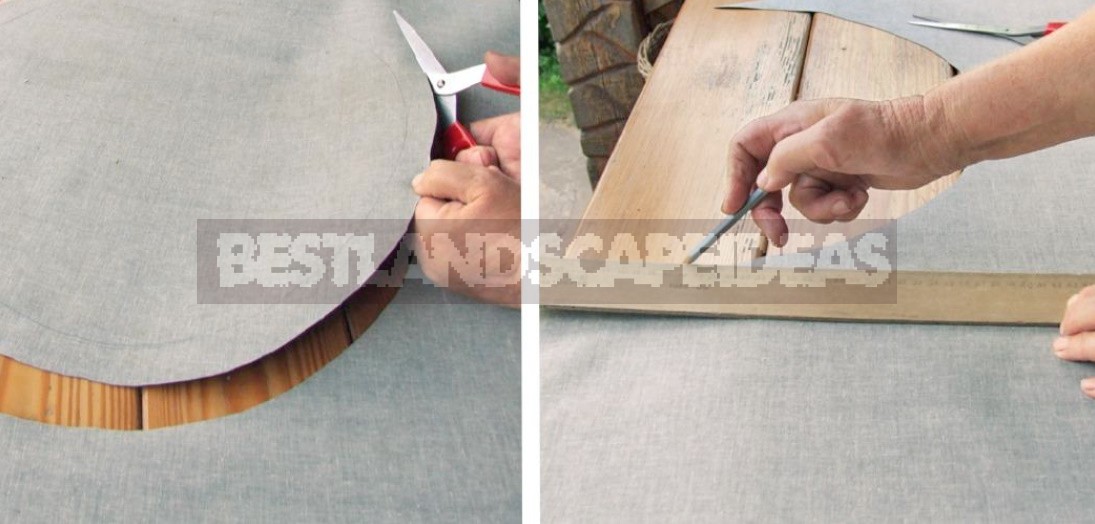
7–8. Apply a special glue to the stencil, stick the stencil on the first part of the Ottoman upholstery. Dip a sponge in the facade paint and fill the pattern with dermatin. When working, sometimes mix the colors of both colors directly on the sponge to get an interesting “transition” of color. Fill the pattern on all the parts, alternately gluing the stencil on them.
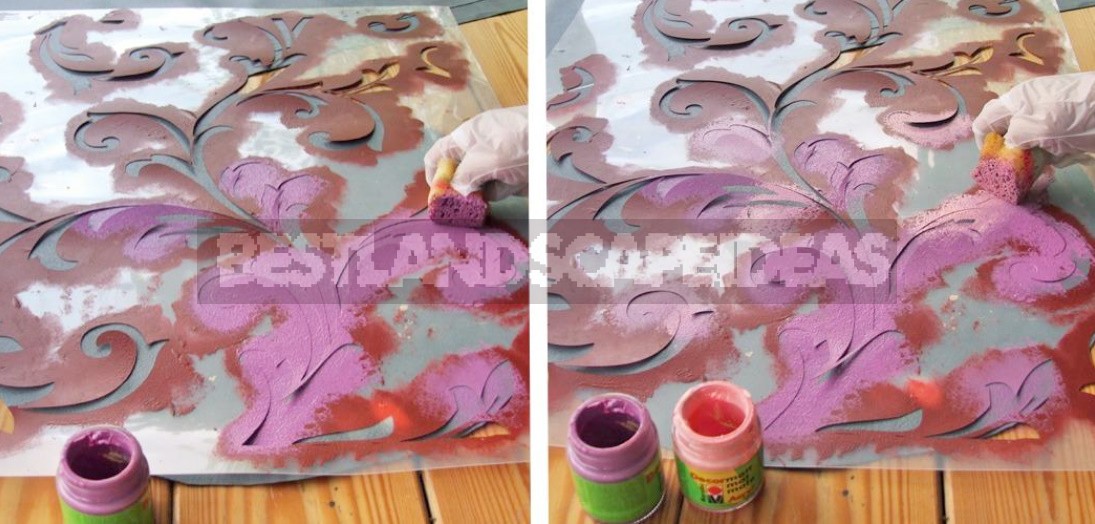
9. Sew the side of the upholstery and one of the circles (for the seat) on the sewing machine. Sew on a long handle to carry the Ottoman. Pull the upholstery over the Ottoman, placing the seat under lutrasil for softness,and attach it.
10.do not sew the Round part for the bottom of the Ottoman, but simply glue it to the plywood and to the side surface.
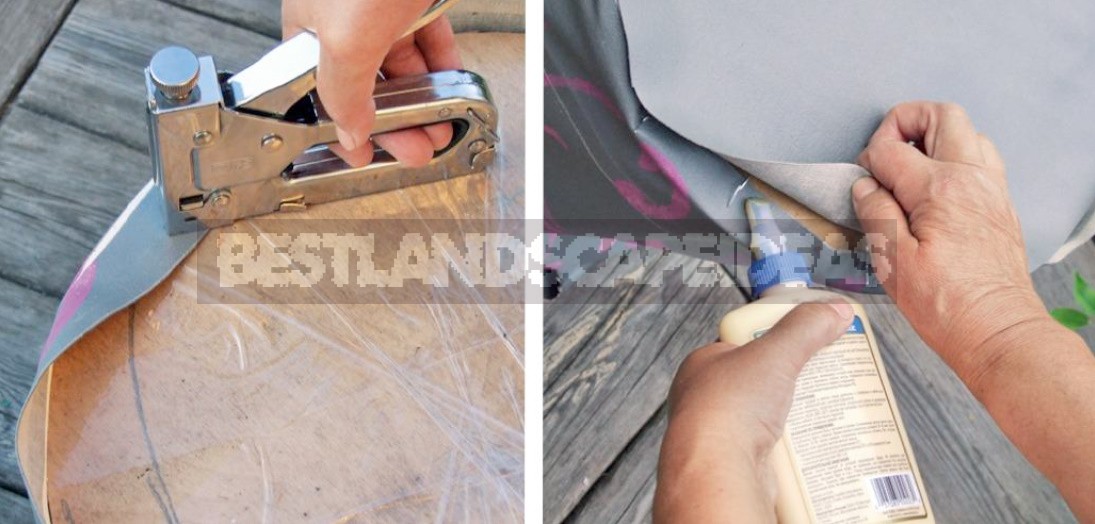
Poufs can complement the “interior” of the garden, or they can contrast with the surrounding “landscape”. In addition to aesthetics, the utility of this piece of furniture is also important.
